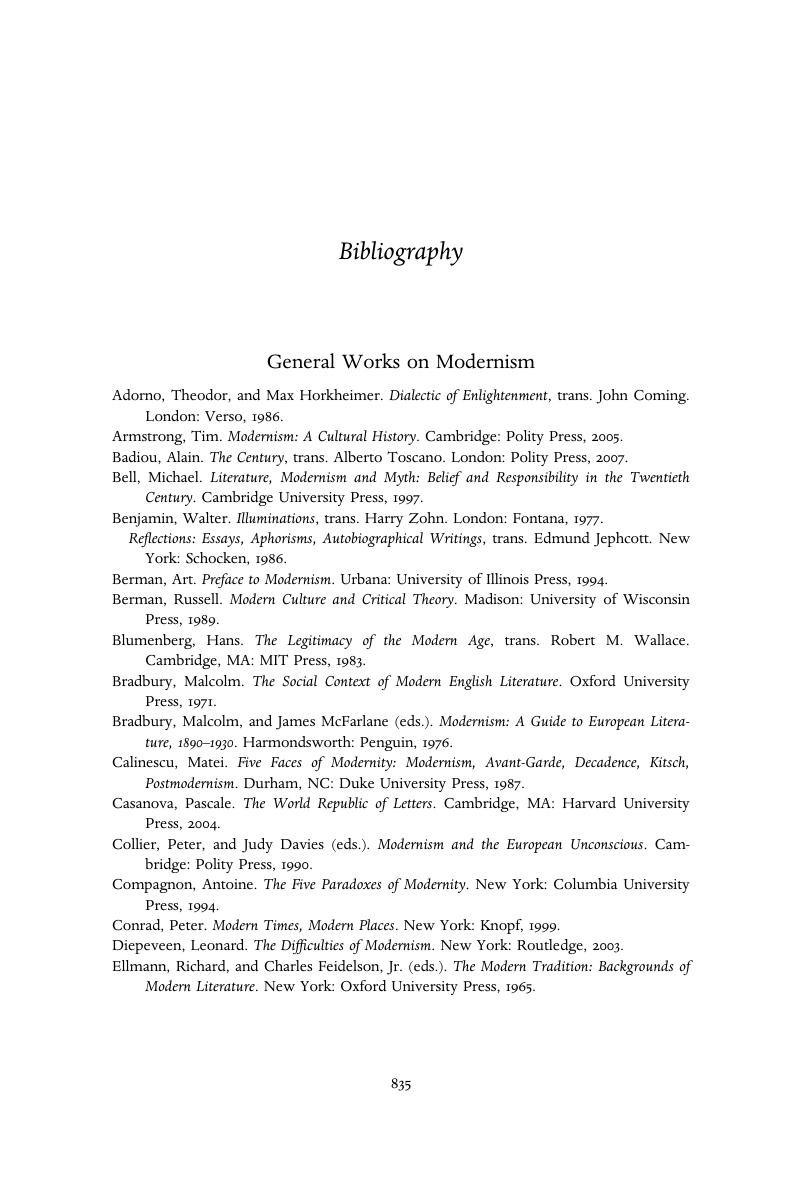Book contents
- The Cambridge History of Modernism
- The Cambridge History of Modernism
- Copyright page
- Contents
- Illustrations
- Contributors
- Acknowledgements
- Chronology
- Introduction: A History of “Modernism”
- Part I Modernism in Time
- Part II Modernism in Space
- Part III Modernism In and Out of Kind: Genres, Composite Genres, and New Genres
- Part IV Modernism in Person, Modernism in Community
- Bibliography
- Index
- References
Bibliography
Published online by Cambridge University Press: 21 January 2017
- The Cambridge History of Modernism
- The Cambridge History of Modernism
- Copyright page
- Contents
- Illustrations
- Contributors
- Acknowledgements
- Chronology
- Introduction: A History of “Modernism”
- Part I Modernism in Time
- Part II Modernism in Space
- Part III Modernism In and Out of Kind: Genres, Composite Genres, and New Genres
- Part IV Modernism in Person, Modernism in Community
- Bibliography
- Index
- References
Summary

- Type
- Chapter
- Information
- The Cambridge History of Modernism , pp. 835 - 884Publisher: Cambridge University PressPrint publication year: 2017

